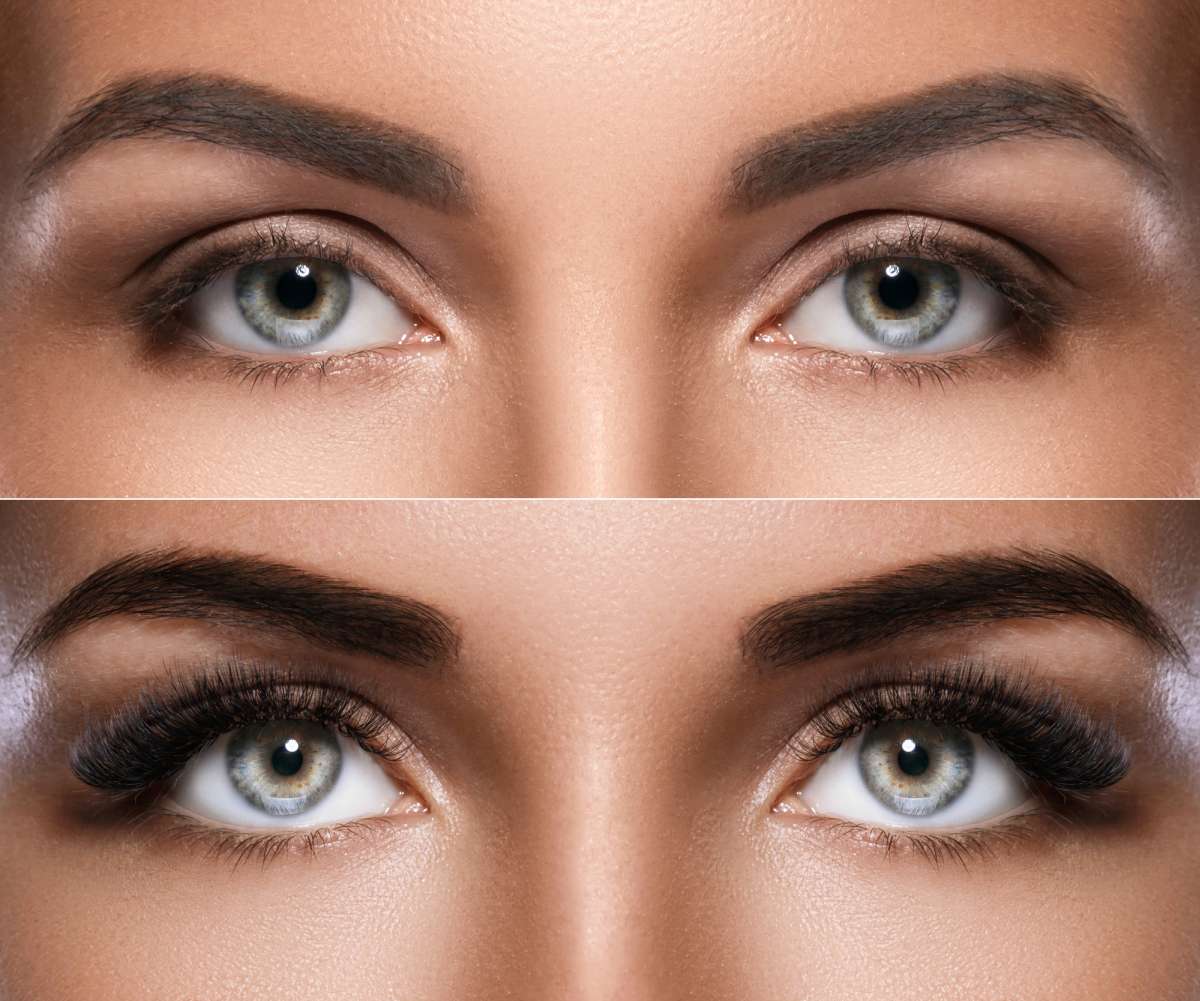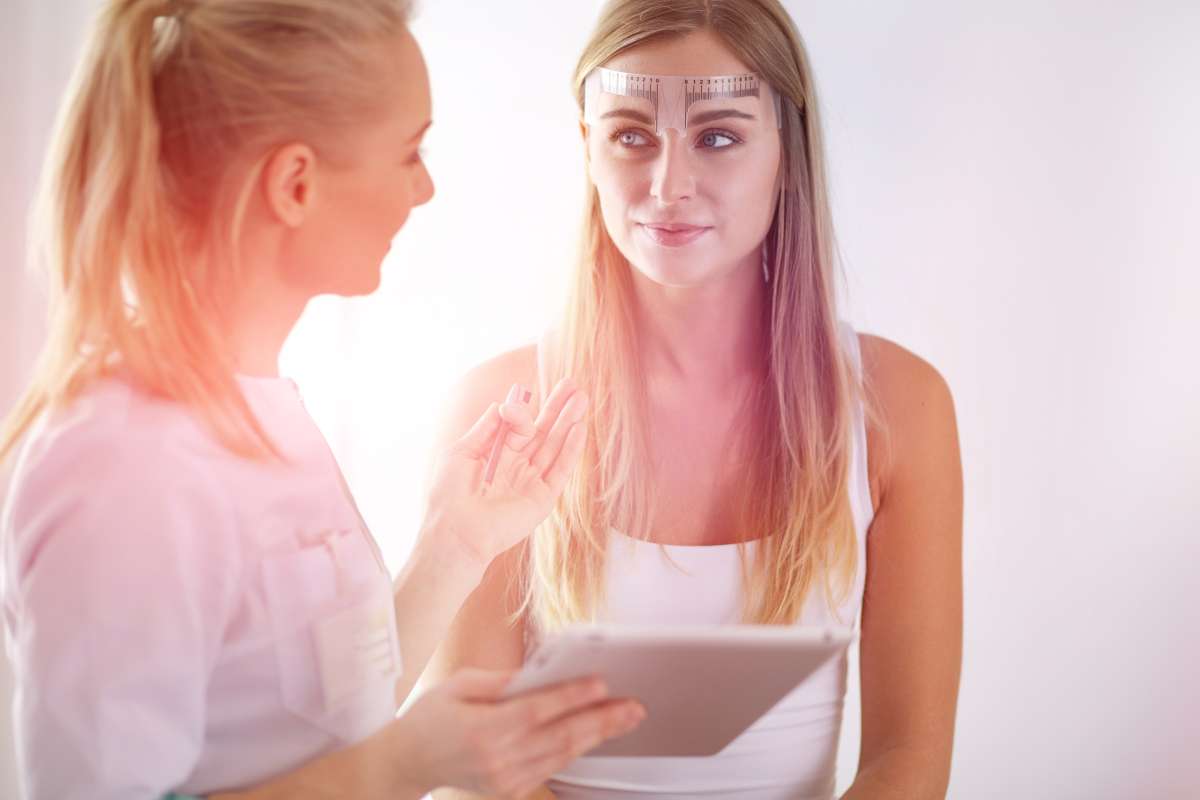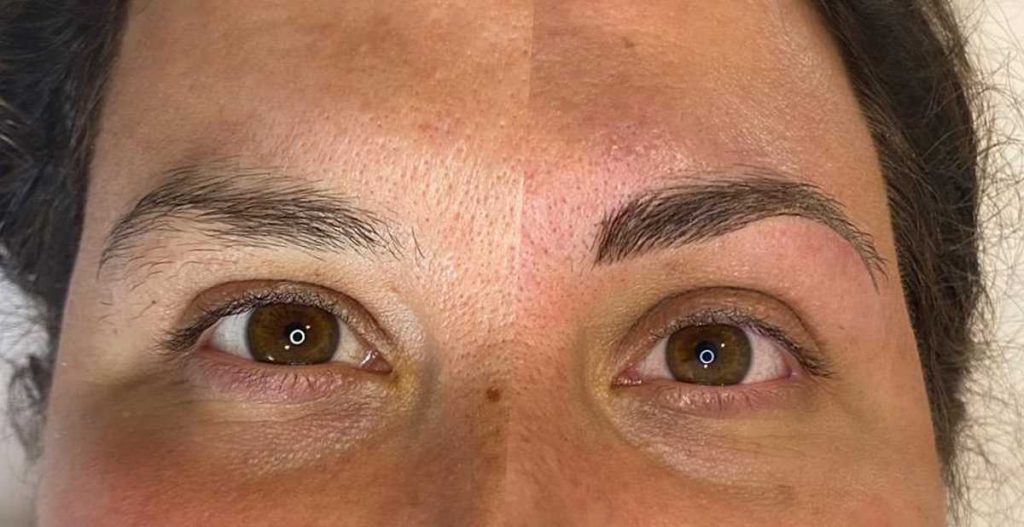Beauty experts agree that attractive eyebrows are crucial to appearing your best as you age. When I was a teenager, I went about it in a very methodical manner (oh, how I wish I'd paid no attention to the cruel girl who told me it appeared as though my eyebrows and hairline were ready to meet!). And eventually, contrary to what my grandma had warned me, they stopped growing back altogether. Add to that the fact that I developed thyroid problems in my late 30s, and there I was, at the age of 42, with a delicate whisper rather than a youth-enhancing frame above my eyes.
I was aware that microblading was the eyebrow technique that the stars were using (Michelle Keegan wrote a blog about her experience with microblading for us here on hello). Even still, the concept of getting a tattoo on my face struck me as very extreme. Sure, I put on a little bit of makeup and moisturise before bed, but I wouldn't exactly call myself a high-maintenance beauty slave. But the subject kept coming up, and when some coworkers in my office acknowledged that the perfect brows they had were the product of microblading, I decided to give it a try myself.
My conversation with a few acquaintances who have a lot of connections led me to learn that Karen Betts is one of the most talented people in the industry. She has a solid reputation among beauty editors, which may be more important than the fact that celebrities adore her. I was aware that in order for their work to remain on my face for the subsequent 18–24 months, it was imperative that I find someone in whom I could place my trust. Aside than that, however, I didn't do a whole lot of research. The next thing I knew, it was a Thursday afternoon, and I was sitting in Karen's plush Harley Street clinic, filling out a health questionnaire. I was a little anxious, but other than that, I was completely unprepared.
Now that we've gotten everything out of the way, let's speak about the aftercare procedure for microblading. I receive a lot of inquiries about the aftercare, and I can't emphasise enough how crucial it is for the ultimate outcomes of the microblading procedure. I hope this helps! The retention of your new eyebrows will largely depend on the care that you provide them in the days and weeks immediately following the procedure. However, there are additional aspects to consider, all of which will have an impact on retention. But for the time being, I will go over the steps that need to be taken to prevent them from fading and to keep them safe. It is essential to refrain from the following behaviours for the first two weeks: Water, perspiration, sun exposure, sleeping with your face on the pillow, and poking at the scabs are all things that might aggravate a rash. Allow me to explain it to you in more detail.

Mistakes After Microblading
Water
During the time that the eyebrows are scabbing over and healing, it is strongly advised against getting them wet. Water will cause the pigment to become more loose and lighter, and it will also prevent the microblading from remaining in the skin. It is highly recommended that you wash your face in the sink. You should wash regularly, beginning at the bottom of the eyes and working your way down, avoiding getting water on your face at any point. Wipe the forehead with a face wipe. Another option is to take a cotton round, moisten it, and then apply a drop of cleanser before moving it in a circular motion across the forehead. It is imperative that you take care not to touch the brows in any way. After that, take another cotton round and dampen it with a very small amount of water to remove the cleaner.
Sweat
Sweat should not be touched either during the healing or scabbing process that follows microblading for the same reason that water should not be touched during this time. Sweat is produced deep within the dermis of the skin and has the potential to expel pigment, which would then prevent microblading strokes from being retained. Even anything described as a "Light Workout" might make you break a sweat. Exercise has the ability to cause the microblading to become less noticeable, despite the fact that you may believe you are "not a sweater." It's of the utmost importance that you refrain from perspiring during these first two weeks. If, after two weeks, you see that you still have scabs, you should continue to avoid sweating until all of the scabs and flaking skin have gone off.
Sun
Believe it or not, exposure to the sun can have an effect on the length of time the microblading lasts. The UV rays have the potential to hasten the pigment's degeneration. Because of this, it is important to stay out of the sun completely for a period of four weeks. It is strongly advised that you stay out of the sun entirely for the first two weeks of treatment. Whenever you must be outside, wear a hat to protect your face from the sun. If you are still scabbing after the first two weeks, you should wait until all of the scabs have fallen off before applying sunscreen to your eyebrows and going outside. If you are still scabbing after the first two weeks, read on. It's strongly advised that you put on a hat whenever you go outside.
Pillows
I never fail to stress to my customers that this aspect is not only incredibly important, but also the most challenging to circumvent. When we are asleep, the majority of the time, one side of our face will be resting on a pillow. It makes no difference how you sleep; that is always the case. Regardless of whether you sleep on your side, back, or stomach. It is of the utmost importance to make every effort to prevent your face from coming into contact with the pillow. This is because the pillow itself can irritate the eyebrows and cause the scabs to fall off too soon. This will result in the microblading strokes becoming absolutely unnoticeable. I suggest sleeping on your back and using a travel pillow to provide some distance between your face and the cushion so that you don't suffocate.
If you have microblading and it got wet and you are freaking out over it, please try not to. Read this post if you're wondering what's "acceptable" after microblading. It will answer all of your questions. We are going to discuss the reasons why you shouldn't get your newly microbladed brows wet just yet, the effects of water on your brows, what to do if you accidentally got them wet, and a few other related topics.
Even though getting your brows wet throughout the healing process isn't the best idea, there's nothing you can do about it now because you can't go back in time and correct it. Therefore, whatever damage was done will remain, and there is not much you can do about it at this point in time because it has already been done. The amount of moisture that was applied to them should be the primary focus of your attention. A minor incident, such as a splash from the water, a few raindrops running down your face, or something else of a similar nature, will NOT result in any significant problems.
However, if you spent thirty minutes in a sauna, forty-five minutes in a cycle class, or went swimming, then you most likely caused some harm to your eyebrows. The good news is that this issue may be addressed and resolved while you are getting your touch up done. The unfortunate news is that your artist will most likely have to put in more effort than usual, but the good news is that the issue should be solvable.
If you do manage to get them wet, you should lightly pat them dry and then proceed. You may always contact out to your artist and let them know what happened. In addition, they may be able to provide you some guidance. If you are concerned, you can do so at any time. However, there is little you can do until such time as your brows have completely healed, as you will not be able to return to the salon for a touch-up while you are still in the healing process.

What Happens to Microblading Pigment When It Is Wet?
If you get microblading done and it cost you hundreds of dollars, it only makes sense to make sure that you do all it takes to keep them looking spotless and lovely. It never ceases to amaze me that ladies who get their brows done are always attempting to push the limits of what they are allowed to do and what they are not allowed to do.
Avoid putting yourself in this category. The rules that have been established for microblading have been put in place to ensure that YOU achieve the most desirable results. I want your brows to look gorgeous, and I'm sure the person who handles your makeup does as well! But I absolutely get it if you want to know the reasoning behind why we suggest doing these things.
Now that we're on the subject, let's talk about what happens to your eyebrows when they get wet for at least a little while. Because microblading is a technique that only leaves a semi-permanent mark, the pigment that is applied to your skin during this process does not go as deeply as your dermis (the depth that tattoo artists go).
What does that imply for you moving forwards? It indicates that the pigment, which gives your skin its colour, is not embedded very deeply in your skin and that it can be "pushed" out by a number of different factors. This indicates that it is literally feasible for your ink to "fall" out of the wells that your microblading artist constructed for it!
What factors cause them to become loose? Water, you guessed correctly. Okay, so it's not exactly the water, but water is definitely a major factor in this. If you place any liquid directly on the region where you had microblading done while it is healing, you run the risk of losing your pigment. In the event that you have a loss of pigment, the WHOLE process may need to be repeated.
And believe me when I say that getting in that one more workout is not going to be worth having to schedule another appointment lasting a couple of hours and having a microblade applied to your brows in order to make them look beautiful. Because of this, both I and other artists are very careful to make sure that you DO NOT get your brows wet before we begin the process of shaping them.
Maintenance Tips
At least one time a year, according to the recommendations of the majority of professionals, you should get your microbladed eyebrows "touched up." In order to complete this touch-up, you will need to add colour to the outline of your brows that are already there. After your skin has completed the healing process, you will want to ensure that your microblading investment is safeguarded by properly caring for your skin. It is possible that using a sunscreen on the area that has been microbladed will assist prevent fading. Microblading is a form of permanent cosmetic tattooing that, like other related treatments, such as tattooing the eyebrows, will fade with time. Due to the reduced amount of pigment utilised, there is a possibility that fading will occur at a faster rate than with brow tattooing. Two years after your first surgery, you'll likely need it again.
Frequently Asked Questions About Microblading And Brow Tattoo
Avoid getting the area wet for at least 7 days. This includes keeping your face dry during a shower. Don't wear makeup for at least a week. This is because the pigments are still settling into the shallow cuts in your skin caused by the blading.
Long story short: getting your eyebrows wet after Microblading by washing them with water and soap does NOT affect the result from the ink underneath your skin, because it's already being “treated” by your body's defense system the minute the PMU (Microblading, Ombre Brows, Powder Brows, etc) procedure starts.
Can I sleep on my face after microblading? Don't sleep on your stomach, and don't even sleep on your side. Sleeping with your face smooshed might mess up the healing process after you get your microblading done. Use an airline neck pillow to force yourself to sleep on your back.
The straight answer to your question is: between 2-10 days! Yes, you must wait at least 2 days before getting your eyebrows wet. Some experts even recommend waiting for at least 7-10 days before you wash your face post microblading. But this timeline will vary according to your healing process.
As the pain and tenderness go away, your brows will darken and thicken. They'll still look very bold. By day 5, your brows will begin to scab. They will be flaky and extremely itchy.

